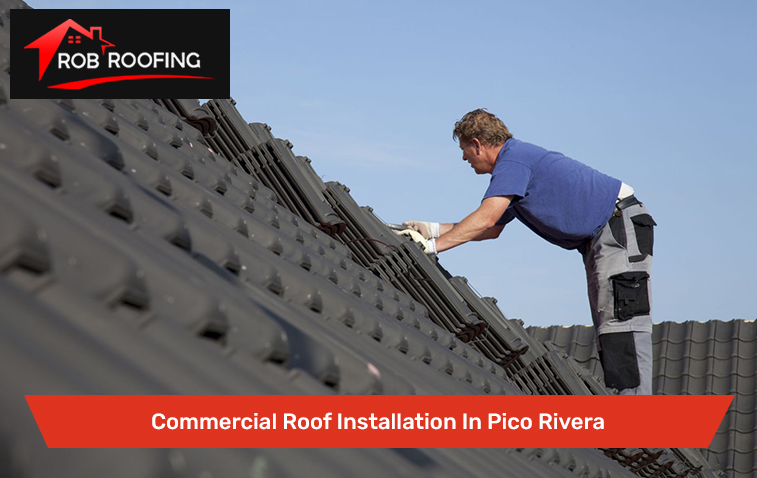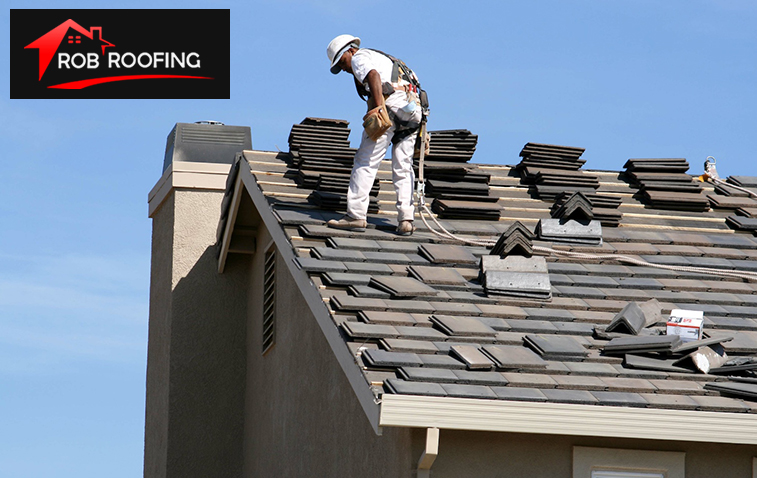Commercial Roof Installation in Pico Rivera
When it comes to commercial roof installation in Pico Rivera, careful planning and adherence to local regulations are crucial. The process involves several key arrangements, starting with a thorough assessment of the existing roof and determining the appropriate materials and design for the new roof. Permits from the local authorities are required, which entails submitting detailed plans and specifications.

Hiring a professional contractor for commercial roof installation in Pico Rivera is essential. At Rob Roofing, we help you navigate the complexities of the installation process, ensure compliance with building codes, acquire the necessary permits, and execute the project efficiently and safely. Our experience and knowledge ensure a high-quality commercial roof installation that meets your specific needs and withstands the test of time. Get in touch today.
Rules to Follow – Commercial Roof Installation in Pico Rivera
During the commercial roof installation in Pico Rivera, there are several technical rules and guidelines that should be followed to ensure a successful and durable installation. Some of the key technical rules include:
Adhering to Building Codes
It is crucial to comply with local building codes and regulations governing commercial roof installations. These codes specify requirements for materials, insulation, fire resistance, load capacity, and other aspects of the roof system.
Proper Roof Design
The roof design should be carefully planned to meet the specific requirements of the building and the environmental conditions in the area. This includes considerations such as slope, drainage, ventilation, and appropriate insulation.
Quality Material Selection
High-quality roofing materials that are suitable for the specific application and building type should be selected. This includes the roofing membrane, insulation, underlayment, flashing, and other components.
Correct Installation Techniques
The installation is carried out following industry best practices and manufacturer guidelines. This includes proper techniques for laying the roofing membrane, fastening, sealing, and integrating different roof components.
Attention to Detail
Every aspect of the installation, including seams, joints, and penetrations, should be meticulously executed to ensure a watertight seal and long-term durability.
Safety Measures
Safety protocols should be followed throughout the installation process to protect workers and ensure compliance with occupational health and safety regulations.
Determining the Right Roof Design
Here’s a table outlining the key elements of a commercial roof and the part they play in determining the roof design:
| Element | Element |
|---|---|
| Slope | The slope refers to the angle or pitch of the roof. It determines how quickly water drains off the roof surface |
| Drainage | Drainage systems, including gutters, downspouts, and internal drains, are designed to direct water away from the roof effectively. |
| Ventilation | Roof ventilation allows for the exchange of air between the roof space and the exterior |
| Other Elements | Other elements include roof decking, flashing, skylights, chimneys, and penetrations |
The Factors to Consider When Choosing the Right Material
As professional contractors for commercial roof installation in Pico Rivera several factors when choosing the right roofing material for commercial roof installation. Some key factors include:

Durability
The durability of roofing materials is assessed to ensure they can withstand the specific environmental conditions, such as extreme temperatures, wind, rain, and sunlight exposure.
Weather Resistance
The ability of the roofing material to resist weather elements, such as UV rays, moisture, hail, and snow, is important for long-term performance and protection.
Energy Efficiency
The energy efficiency properties of roofing materials are considered, such as their ability to reflect solar heat and reduce cooling loads, which can contribute to energy savings.
Cost
We consider the initial cost of the roofing material, as well as its long-term maintenance and repair requirements, to determine the overall cost-effectiveness
Compatibility
The roofing material should be compatible with the specific roof design, slope, and structure of the building to ensure proper installation and functionality.
Local Building Codes
We consider local building codes and regulations to ensure the selected roofing material meets the required standards for fire resistance, wind uplift, and other safety considerations.
